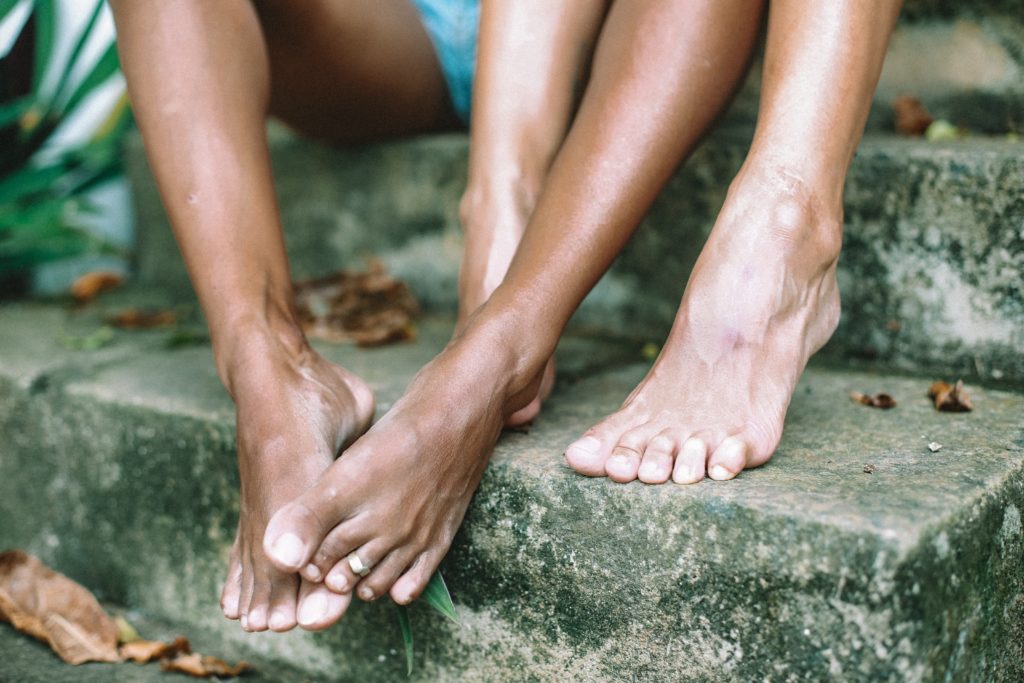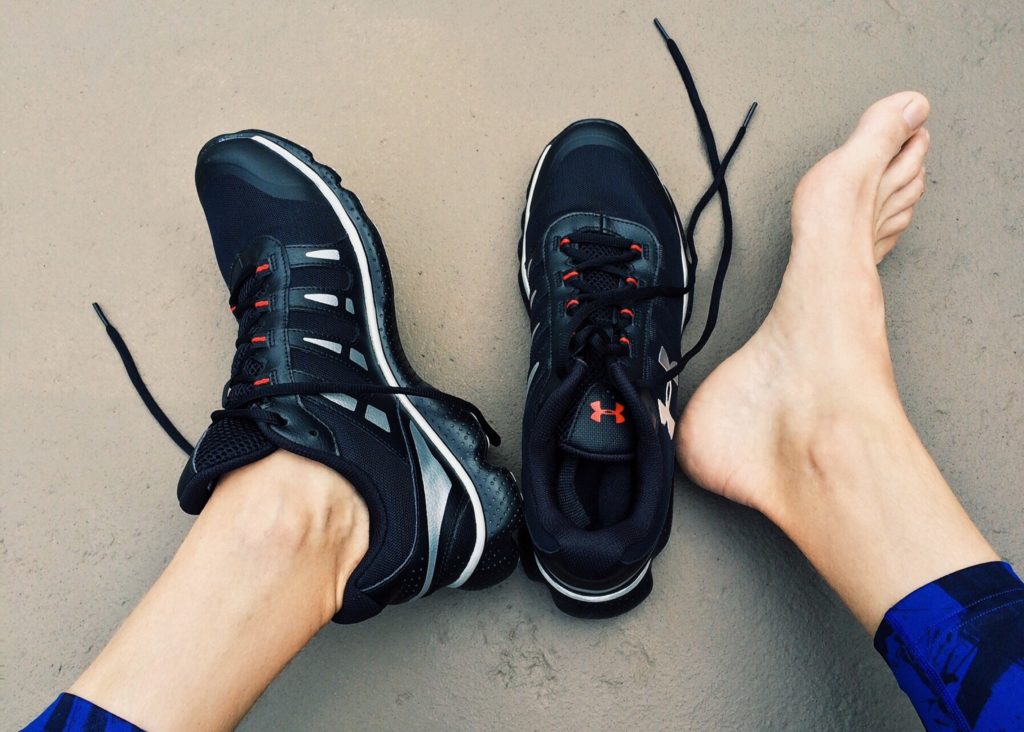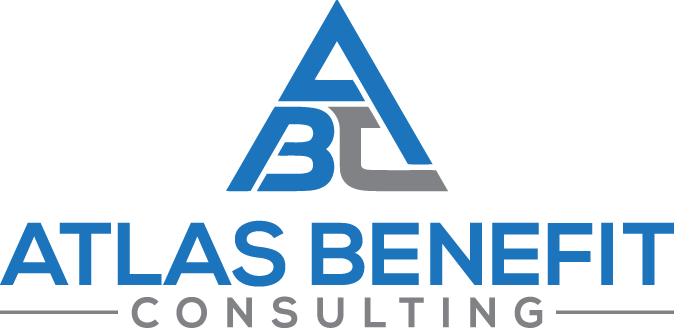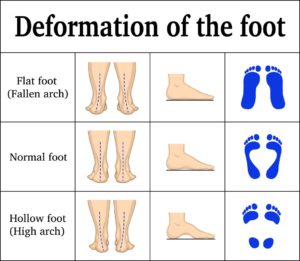Did you know that many veterans have foot problems, pain, or conditions that they suffer from that are often overlooked or misunderstood, and causing them to miss out on disability ratings/benefits? In this post, we’re going to get a little scientific, but then break it down, so you can get a more clear idea of what deformities and conditions of the feet really mean and which are most common.
Most Common Disabilities in Feet
Pes Planus
A flat foot/fallen arch. Read more about pes planus here. Some of the symptoms of more extreme/severe cases of pes planus are:
- Swelling
- Tired, worn out feet
- Arch and heel pain
- Pain that may radiate to the legs and lower back
- Altered gait, or walking pattern
Pes Cavus
A hollow foot/high arch. The arch does not flatten when bearing weight. Read more about pes cavus here. Some of the symptoms from more extreme/severe cases of pes cavus are:
- Soreness after walking or standing for long periods
- Claw-like toes, where the toes clench
- Bent toes, referred to as hammertoes
- Calluses on the heel, sides or ball of feet
- Weak or unstable ankles, potential for more frequent ankle sprains
- Most footwear being uncomfortable
Plantar Fasciitis
Plantar fasciitis can result from either a fallen (flat) or high arch. Some of the symptoms of plantar fasciitis are:
- Pain or swelling in the heel
- Increase in pain after physical activity or exercise
- Pain in the arch
- Hammertoes
- Bunions
- Inflammation
- Limited mobility
- Pain after standing for a long period of time, OR
- Pain that is more extreme in the morning
- Tight, painful Achilles tendon

Ratings for Feet
Feet are rated on the severity of symptoms. We have broken down the severity and percentages below.
Moderate symptoms
One foot 10%, Bilateral (both feet) 10%
- Weight bearing line over the big toe (flat foot)
- Pain increases when using or moving one or both feet
- Inward bending of Achilles tendon
Severe symptoms
One foot 20%, Bilateral 30%
- Deformity or marked pronation- This sounds scarier than it is. Foot deformity and pronation is from a flat foot or high arch. We can help you determine if you are suffering from either of these!
- Pain on moving the foot
- Increased pain on use of one or both feet
- Swelling
- Characteristic calluses
Pronounced symptoms
One foot 30%, Bilateral 50%
- Marked pronation -Again, this is from a fallen arch (flat foot) or a high arch
- No improvement by inserts, appliances or orthotics
- Extreme tenderness on plantar surfaces- which is the bottom of the feet
- Inward displacement or severe spasm of Achilles tendon

Connect With Us
We work with veterans to help them maximize their VA benefits. The process can be complicated, but we help simplify, streamline, and take the stress out of it. Use the button below to connect with a member of our team. One of our consultants will review your service-connected disabilities and work with you to determine if you might be eligible to utilize our service. If not, we will suggest other methods that may yield better results.
Click Here for Info on Your Free ConsultationCheck Out Our Client Reviews
We know it can be hard to take the leap of faith and connect, hoping for the best, but not having much faith. We want to assure you that we value your time and our own. We will be up front with you about whether you could benefit from our services. We encourage you to use the buttons below to read some of our veteran client reviews on Google and Better Business Bureau! We are always happy to answers your questions, so reach out today.
Read our Google Reviews Here!Our BBB Ratings



